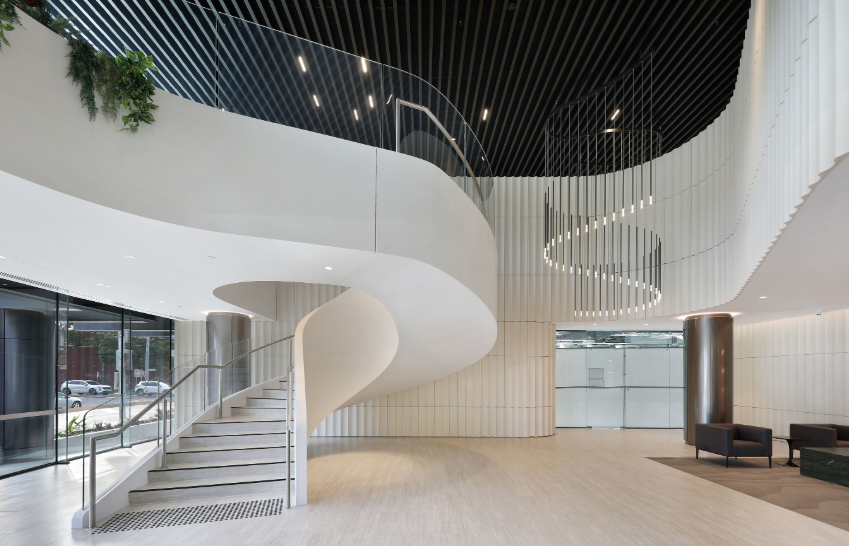
Aluminum Batten Design and Applications in Modern Construction
Aluminum batten is architectural element used to enhance both the aesthetic and functional aspects of a building’s exterior or interior. They offer a lightweight, durable, and corrosion-resistant alternative to traditional materials, making them popular in modern design and construction. Aluminum battens provide strength, ease of installation, and a sleek appearance, making them an efficient solution for cladding, facades, and decorative accents.
These systems often come in various shapes and sizes, allowing designers flexibility in creating unique patterns or sequences. The material’s inherent properties, such as being one-third the weight of steel, make aluminum battens both practical and cost-effective for a range of architectural applications.
Because of their versatility, aluminum battens can be used for privacy screens, feature walls, ceilings, and exterior shading devices. Their ability to blend function with form appeals to professionals seeking sustainable and visually appealing building solutions.
Aluminum Batten Basics
Aluminum battens are narrow, elongated elements extensively used in architectural and construction projects due to their durability and design flexibility. Their construction, material properties, and different types influence their function and application.
Definition and Overview
An aluminum batten is a slim, linear profile made primarily from high-grade aluminum alloys. It is designed to serve both structural and decorative purposes in facades, ceilings, partitions, and cladding systems. Aluminum battens provide a lightweight alternative to wood or steel, featuring corrosion resistance and ease of installation.
They often appear in exterior and interior designs, offering architects and builders the ability to create clean, modular lines. Aluminum battens also accommodate various mounting angles, enhancing aesthetic adaptability without compromising strength.
Materials and Construction
Aluminum battens are typically produced through extrusion, where heated aluminum is pushed through a shaped die to form continuous, uniform profiles. This process ensures precision, strength, and consistent dimensional accuracy for each batten.
The use of high-grade aluminum alloys contributes to the material’s fire resistance and low maintenance. Many battens are treated or coated for increased durability against weather and wear. Their lightweight nature simplifies transportation and installation compared to heavier metals.
Construction usually involves snap-on clip systems or mounting brackets, allowing secure attachment to walls, ceilings, or structural frames. Lengths can vary, with typical availability up to 6 meters or more.
Types of Aluminum Battens
Aluminum battens come in various shapes and sizes, from narrow strips to wider planes. Common profile dimensions range from 1″ x 2″ to larger sizes such as 2″ x 8″. Some systems include joiners to extend lengths or connect multiple pieces seamlessly.
Design variations support vertical, horizontal, or angled installations, allowing customized façade or ceiling patterns. Some battens replicate the appearance of wood, combining aluminum’s durability with a natural aesthetic.
Specialized systems also exist with patented clip mechanisms for easy assembly and disassembly. These include options for pedestrian gates, sliding gates, and feature walls, emphasizing versatility in architectural applications.
See also: Managed IT Service Provider Near Me Reliable Solutions for Local Businesses
Applications and Benefits
Aluminum battens serve multiple roles in construction, offering both visual appeal and practical advantages. Their use extends across exterior and interior settings, where durability and ease of installation are critical.
Architectural Uses
Aluminum battens are widely used in façades, ceilings, and cladding systems. They provide clean, linear accents that contribute to the building’s aesthetic coherence. Designers often select them for their ability to integrate ventilation and lighting seamlessly into architectural elements.
In addition to exterior applications, aluminum battens function as decorative interior features, offering a modern alternative to wood or steel. Their versatility allows for diverse design outcomes, from industrial to sleek contemporary styles.
They are also employed in shading systems and partition walls, where their structural and visual qualities enhance both form and function.
Performance and Durability
Aluminum battens exhibit excellent resistance to corrosion, oxidation, and harsh weather conditions. Their aluminum alloy composition combined with surface treatments—such as powder coating or PVDF finishes—ensures long-term durability even in coastal and high-humidity environments.
This corrosion resistance reduces maintenance needs compared to traditional materials like wood and steel. They maintain structural integrity and appearance over time, resisting rust and warping.
Their lightweight nature means they impose less load on building structures while still offering substantial strength.
Installation Methods
Installation typically involves fastening battens to supporting frameworks such as metal or timber substructures. Methods include screw fixing, clipping systems, or adhesive bonding depending on the application and desired finish.
Because aluminum battens are extruded in precise lengths and profiles, they allow for quick, consistent installation with minimal onsite modification.
Prefabrication options often reduce labor time and errors. Their modular design supports easy replacement or adjustment after installation.
Proper alignment and secure fixing are crucial to ensure weather-tightness and structural stability.



